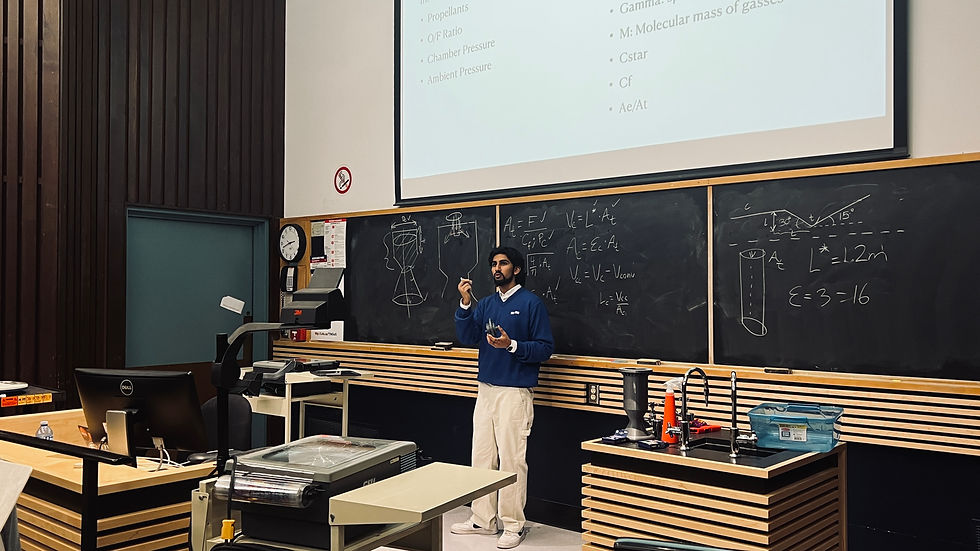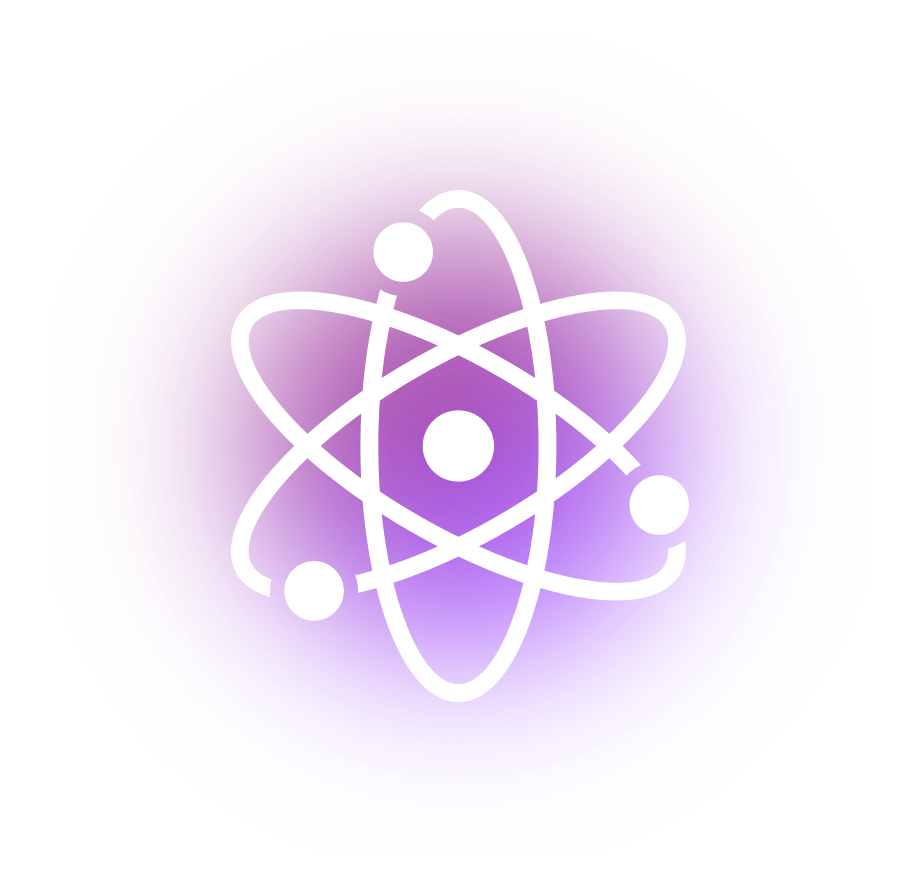Rocket Engine Technical Lecture
Project Type
Rocketry
Project Overview
After successfully firing our first rocket engine, I wanted to inspire more students to explore rocket science and share the lessons I learned during the design and manufacture process. To achieve this, I hosted a 2 hour technical lecture attended by around 60 engineering students.

Lecture Highlights
Rocket Engine Fundamentals:
Explained the different types of rocket engines: solids, hybrids, and liquids. Covered the anatomy of a rocket engine, focusing on the de Laval nozzle and its role in converting pressure into velocity.
Propellants:
Detailed the types of propellants, their chemical and thermodynamic properties, and why we chose Ethanol and Liquid Oxygen (LOX) for our engine.
Injector Design:
Discussed the purpose of the injector and the importance of atomization for efficient combustion. Showcased various injector designs and explained the reasoning behind selecting a pintle injector.
Design Equations:
Provided an overview of the design equations used in rocket engine design. Made the content accessible for beginners while ensuring a solid understanding of key calculations. Walked through selecting figures like chamber pressure and thrust force and their impact on the design.


Live Demonstration
To illustrate the importance of injector performance and atomization, I conducted a live demonstration. Using a squirt gun and a spray bottle, I showed the difference between a stream and a mist of isopropyl alcohol in a flame. The mist combusted dramatically, highlighting the critical role of atomization in efficient combustion.

Impact & Outcome
The lecture successfully stimulated interest in rocket science and provided practical knowledge to fellow engineering students. The positive feedback confirmed that I made complex concepts approachable and inspiring. This accomplishment reflects my commitment to both learning and teaching in aerospace engineering, making it a proud addition to my portfolio.
